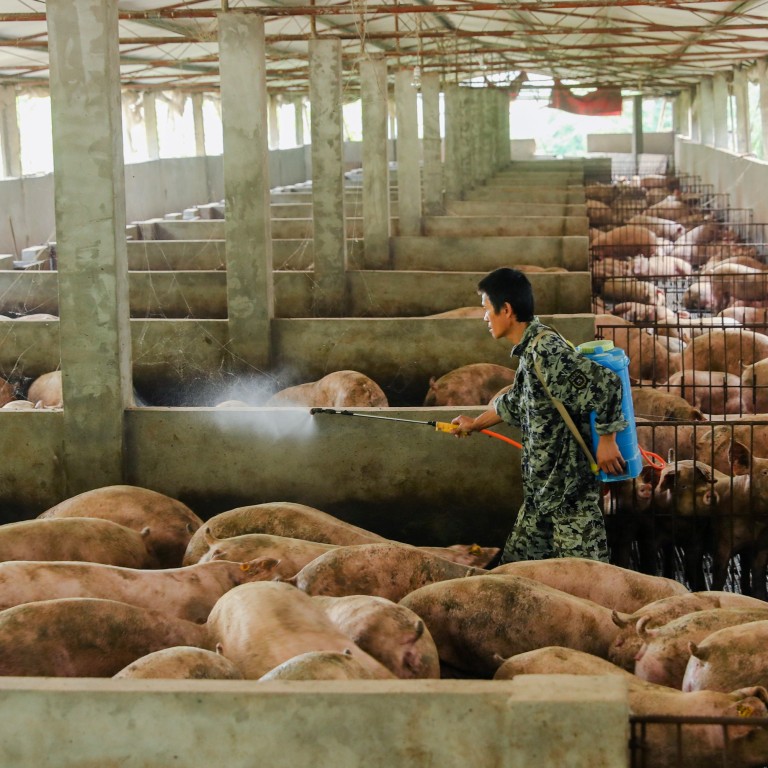
China corn industry also hit by African swine fever as demand for pig feed drops
- China grew 257 million tonnes in 2018 or 40 per cent of the country’s overall grain production, comprising 7.8 per cent of gross domestic product
- Private estimates show China’s pig population has dropped by as much as 60 per cent, while corn imports could also increase as part of US-China trade war deal
Corn accounted for almost 8 per cent of China’s gross domestic product last year and 40 per cent of the country’s overall grain production, but one of the country’s three principle crops is feeling the effects of the African swine fever epidemic as demand for pig feed shrinks, according to industry insiders.
Along with wheat and rice, corn is one of the three principle crops in China, meaning the government will take steps to ensure the country’s self-sufficiency as part of its overarching food security policy.
The annual output of corn was the largest of all crops at 257 million tonnes last year, with the corn industry also an important part of the nation’s economy, contributing 7.8 per cent of China’s gross domestic product last year, according to Tong Yi, chief engineer at the China National Cereal, Oils and Foodstuffs Corporation, the largest state-owned food processor in China.
The situation might be far more serious [than the official figures suggest], according to our own data
Zhang Qirong, who is in charge of corn purchases at Twins Group, a Chinese feed producer, said that their own research has shown that China may lose 50 per cent, or even 60 per cent, of its pigs due to African swine fever.
“The situation might be far more serious [than the official figures suggest], according to our own data,” Zhang told the China Corn Industry Conference in the northern Chinese city of Dalian last week.
Lan Renxing, deputy head of feed supply chain management at New Hope Liuhe, another major feed producer, said swine fever could cut demand for pig feed by 25 per cent this year, which would wipe out at least 23 million tonnes of corn consumption, equal to almost 10 per cent of domestic production.
The corn market receives heavy support in China because the cost of producing each tonne is more than double of that in other major producing countries, such as the United States where the benchmark corn price is around US$155 per tonne, or at least 50 per cent lower than in China.
China guards its domestic market with an annual import quota system of 7.2 million tonnes in 2019 with a 1 per cent import tariff, with imports outside the quota subject to a tariff rate of 65 per cent.
“The lifting of protective measures will be the trend,” Gu added, with feeds and fuels set to lose state protection even though certain controls will remain.
The central government’s annual policy document focusing on agriculture released earlier this year said that wheat and rice production “must be protected”, while corn may only need to be “stabilised”.
In March, Chinese importers booked their largest corn purchase from the US in at least five and a half years despite oversupply at home, according to the US Department of Agriculture.
In addition, a national campaign to increase domestic soybean output amid the trade war has caused more problems for China’s corn sector, with growers in Heilongjiang switching to soybeans this year, according to Feng from Dalian Northern International Grain Logistics.

